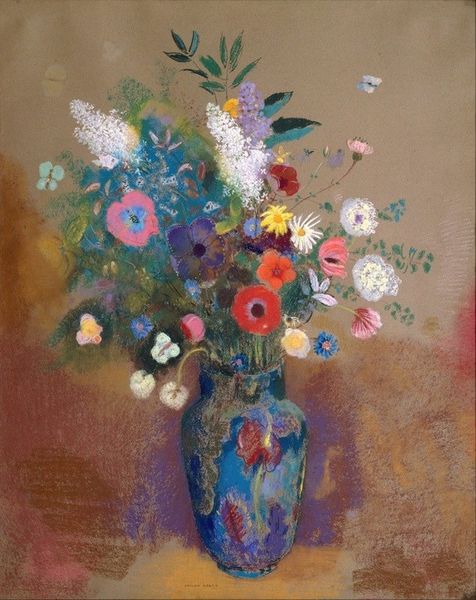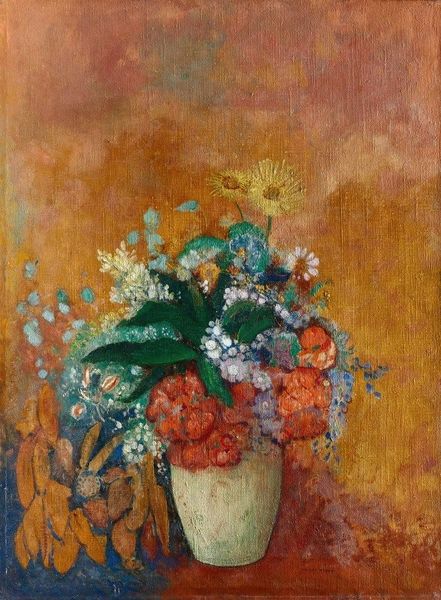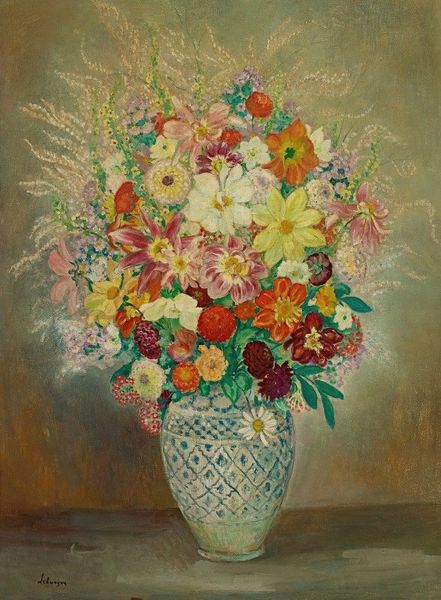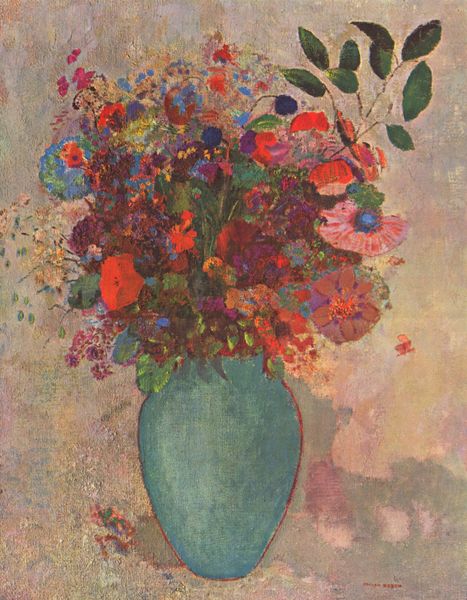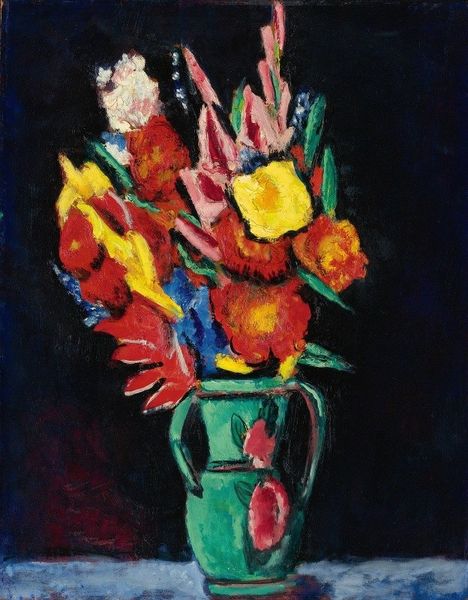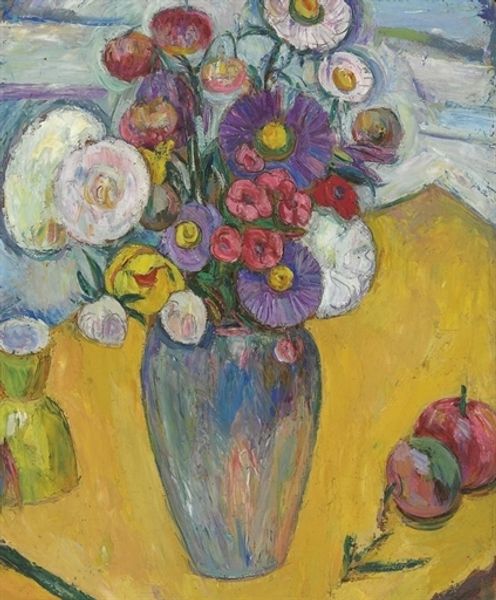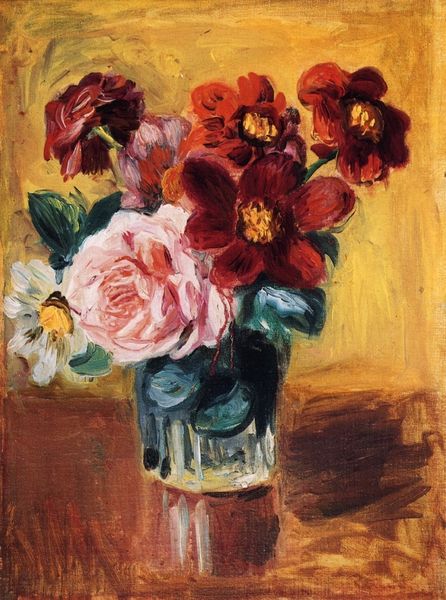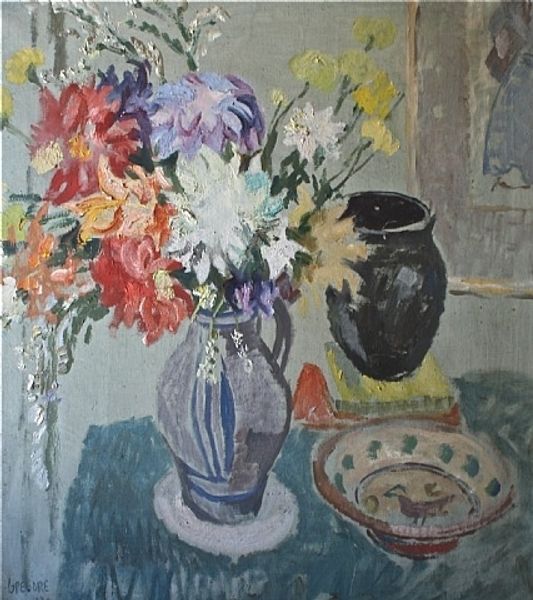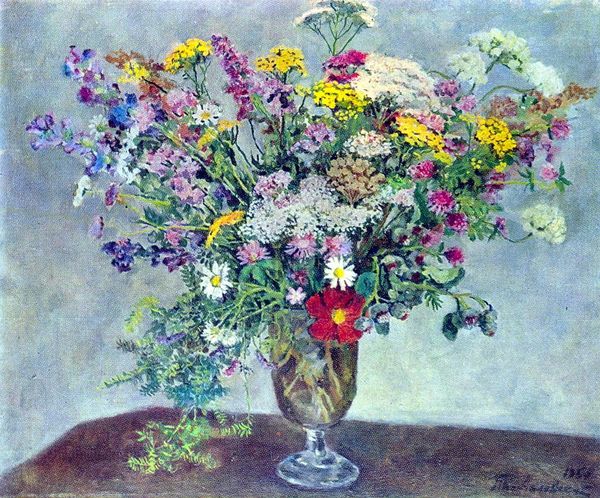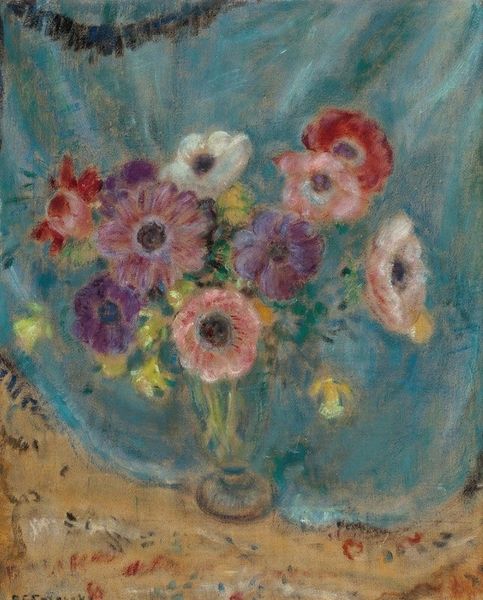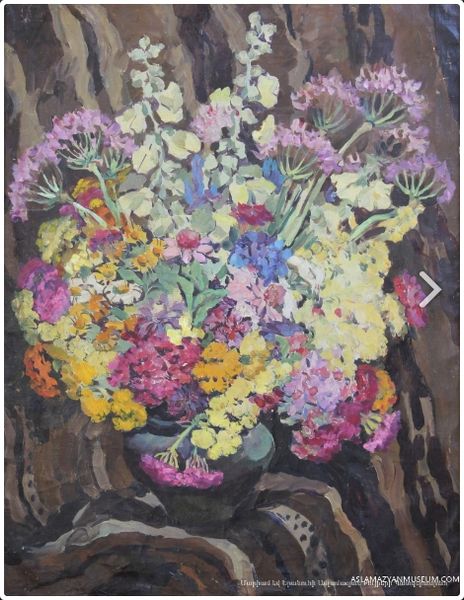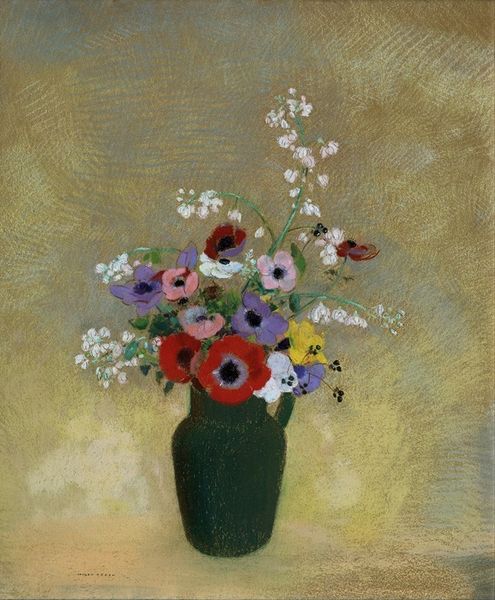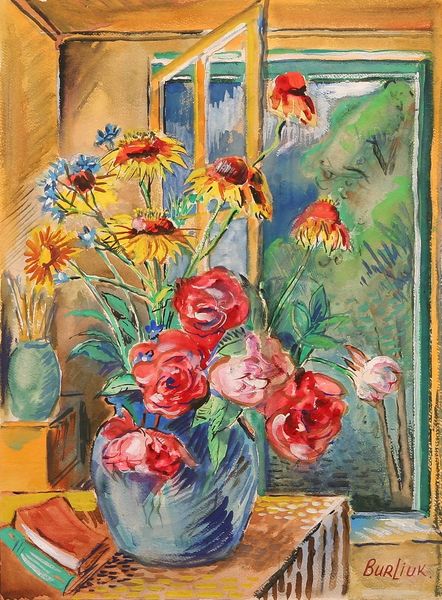
Copyright: Public domain US
Curator: Look closely at "Bouquet of Mixed Flowers," painted in 1917 by Henri Matisse. It now resides in the San Diego Museum of Art. Editor: It's...striking. Somber almost, with that gray background. It contrasts heavily with the vibrant burst of flowers crammed into the vase. There's a real tension here. Curator: Indeed. It's an oil painting rendered with an impasto technique, so the texture itself becomes part of the statement. Consider that this work appeared during World War I. The flower arrangements Matisse created at the time have been connected to resistance and resilience through beauty in times of upheaval. Editor: Interesting. Given that socio-political backdrop, seeing this ostentatious bloom feels a little... defiant, right? It feels like a claim of hope against the odds, pushing back against the darkness. The choice to elevate it, placing the flowers upon the simple wooden stool—it heightens the artificiality of the subject but it gives it importance in contrast to the flat planes. Curator: The context you mention matters quite a lot. Consider also, post-impressionism and artists like Matisse were turning away from strict realism, focusing on expressing inner emotion through color and form. Look how the flowers push past the frame. Editor: And aren't we all bouquet in this instance? If flowers signify life, growth, and beauty, what is the experience for one whose reality does not include that possibility? Does that not also challenge the historical narrative which art too often glosses over? I do see those vibrant pigments almost screaming out against the drab backdrop, making a visual argument for the recognition and rights of overlooked groups. Curator: It’s definitely more than just a decorative arrangement, it becomes this condensed symbol of striving amidst chaos, that pushes on what is beautiful to each, while pushing away the gray world. Editor: Ultimately, it speaks to the endurance of hope and the unwavering human spirit. It gives one the ability to remember better days through difficult ones. Curator: Absolutely, it's fascinating to consider how personal expression in art, like this, ties to broader social narratives and cultural values. Editor: This truly transcends a still life. It asks pertinent and necessary questions for everyone through joy, grief, survival, resistance, love.
Comments
No comments
Be the first to comment and join the conversation on the ultimate creative platform.
